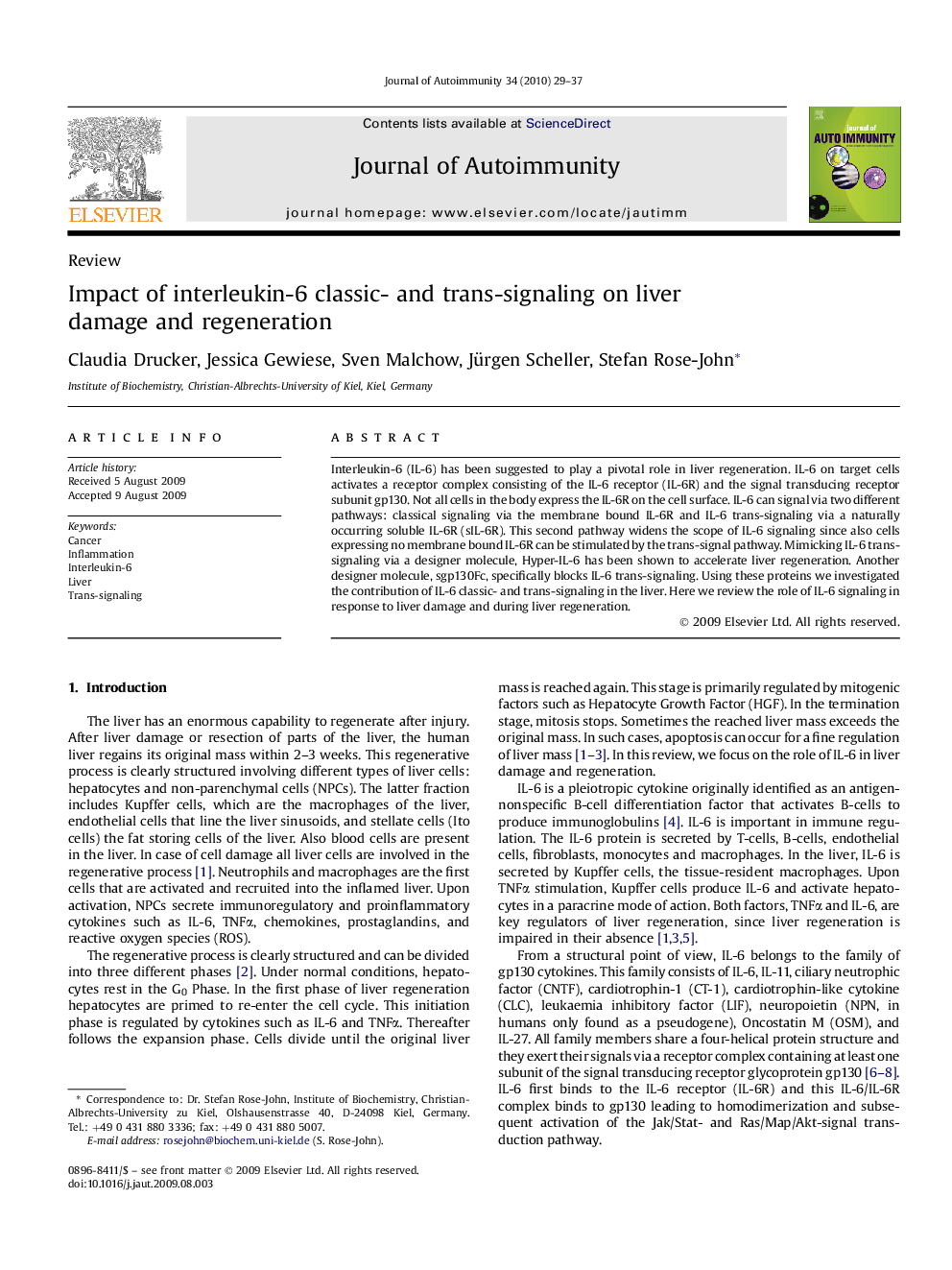| Article ID | Journal | Published Year | Pages | File Type |
|---|---|---|---|---|
| 3368033 | Journal of Autoimmunity | 2010 | 9 Pages |
Interleukin-6 (IL-6) has been suggested to play a pivotal role in liver regeneration. IL-6 on target cells activates a receptor complex consisting of the IL-6 receptor (IL-6R) and the signal transducing receptor subunit gp130. Not all cells in the body express the IL-6R on the cell surface. IL-6 can signal via two different pathways: classical signaling via the membrane bound IL-6R and IL-6 trans-signaling via a naturally occurring soluble IL-6R (sIL-6R). This second pathway widens the scope of IL-6 signaling since also cells expressing no membrane bound IL-6R can be stimulated by the trans-signal pathway. Mimicking IL-6 trans-signaling via a designer molecule, Hyper-IL-6 has been shown to accelerate liver regeneration. Another designer molecule, sgp130Fc, specifically blocks IL-6 trans-signaling. Using these proteins we investigated the contribution of IL-6 classic- and trans-signaling in the liver. Here we review the role of IL-6 signaling in response to liver damage and during liver regeneration.
